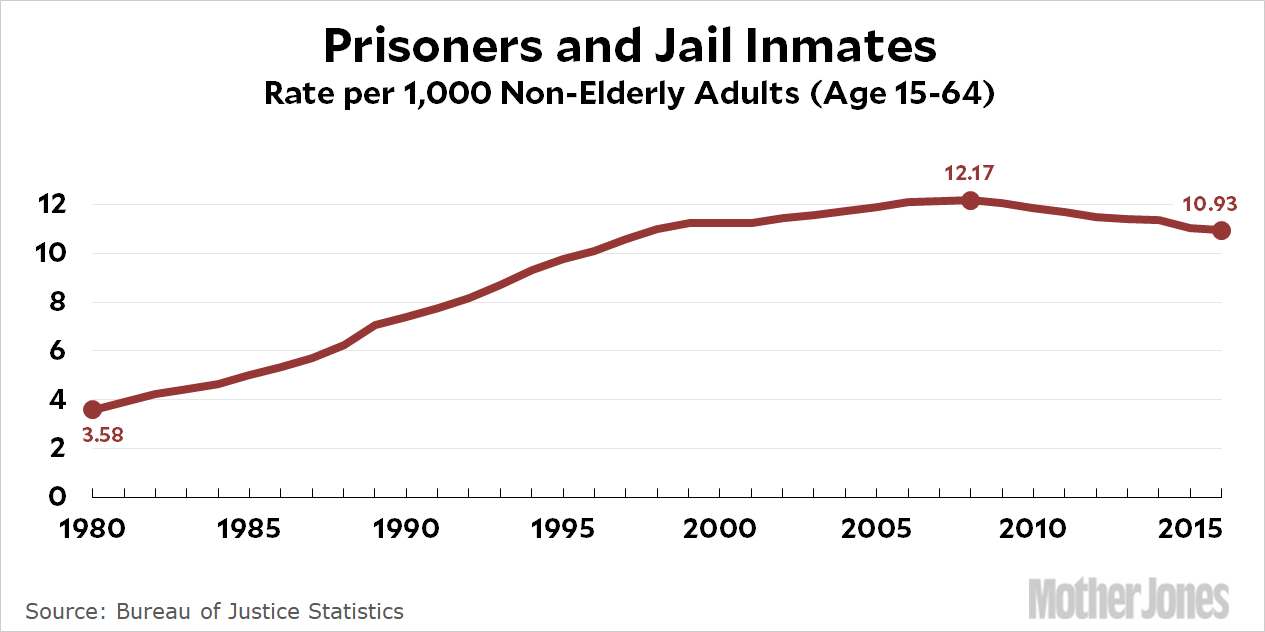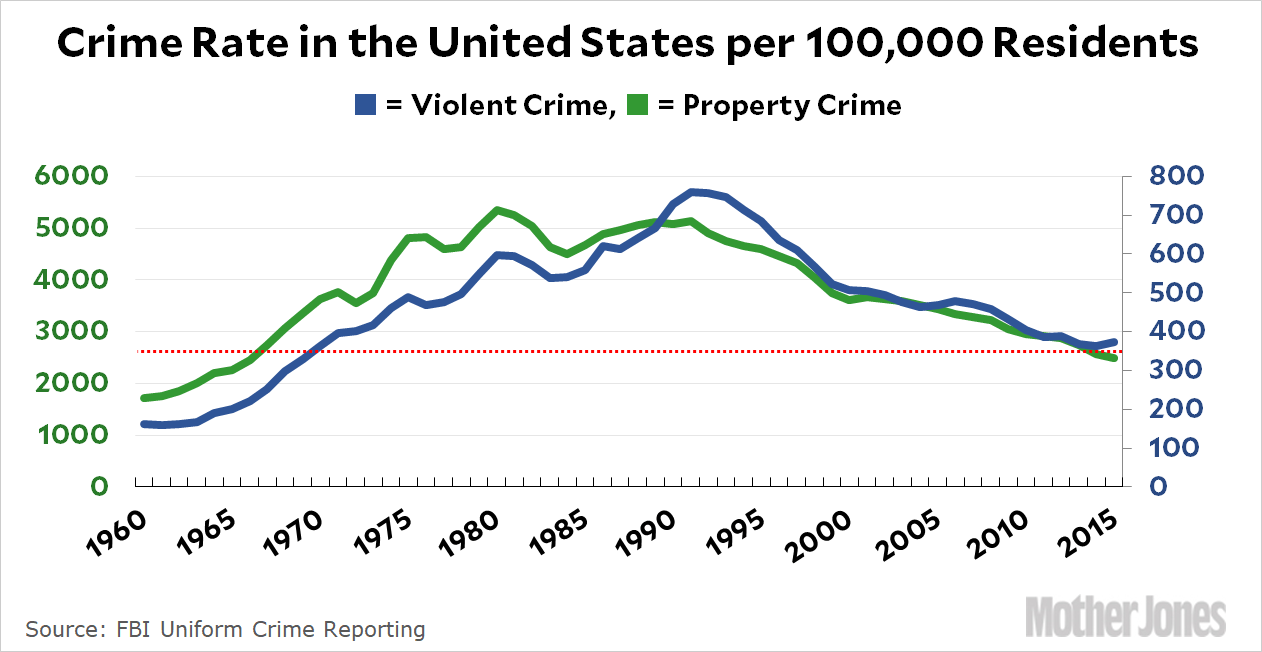Keith Humphreys reminds us today that 2016 prison statistics are now available, and once again the total incarcerated population has declined. That’s good news, but it’s also a good opportunity to show you the long-term incarceration picture:

Between 1980 and 2000, the incarceration rate quadrupled before slowing down and finally peaking in 2008. The incarceration rate has declined 10 percent since then, and while that’s nothing to sneeze at, we have a very long way to go before we get back to anything resembling a sensible rate. We need to cut this in half, to a rate around 4 or 5. After all, our current crime rate is about what it was in the late 60s. There’s no reason our incarceration rate should be much higher.

UPDATE: The top chart originally had the wrong data. The shape was the same, but the numbers were systematically too high. Also it was originally labeled “Rate per 100,000 Non-Elderly Adults.” It’s actually the rate per 1,000.

















